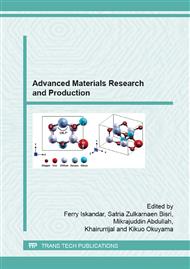p.493
p.497
p.502
p.506
p.510
p.515
p.519
p.524
p.528
Modification of Ceramic Mold for Investment Casting with Silica Sand as Stucco and Nylon Addition
Abstract:
The investment casting process has increasingly been used to produce components because it has the advantage to produce high precision part. One of the obstacles in the investment casting process in Indonesia is imported ceramic mold material. However, Indonesia has the potential silica sand which can be developed as an alternative material mullite . This study aims to develop local silica sand as stucco with the addition of nylon fibers in the slurry. Characterization of the ceramic material is bending test, edge test, and porosity tests that will be compared with the ceramic mold mullite-based. Characterization also conducted on casting product of aluminum impeller turbine by hardness test, microstructure examination by optical microscopy and SEM . The results showed that strength of ceramic molds made from silica sand increase due to the addition of nylon but has not reached a standard ceramic strength. Ceramic mold is able to withstand the load at the time of pouring. There is not misrun in the casting product but some porosity due to low permeability.
Info:
Periodical:
Pages:
510-514
Citation:
Online since:
July 2015
Authors:
Keywords:
Price:
Сopyright:
© 2015 Trans Tech Publications Ltd. All Rights Reserved
Share:
Citation:


